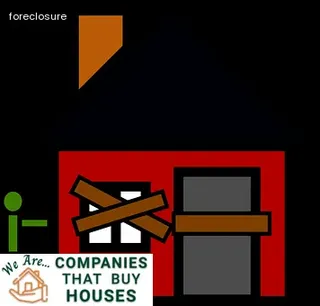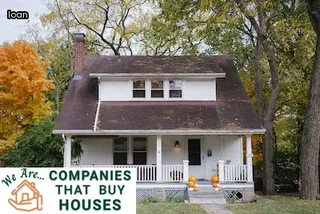In California, the Homeowner Bill of Rights (HBOR) has been designed to protect homeowners from unfair foreclosure practices. This law requires lenders to provide a single point of contact for borrowers, give clear notifications throughout the entire process, and provide certain timelines that lenders must abide by before they can proceed with a foreclosure.
Additionally, HBOR prohibits dual tracking, which occurs when a lender pursues foreclosure while at the same time negotiating with borrowers on other options such as loan modifications. Lastly, it requires lenders to hold onto all payments made by struggling borrowers until the foreclosure process is completed.
Together these components work together to ensure that homeowners are not taken advantage of during what is often an incredibly difficult time.

In California, a no deficiency judgment is a legal tool that protects homeowners from owing more money than their home is worth after foreclosure. This means that after the foreclosure sale of the home, any remaining debt left over from the loan must be forgiven by the lender (or servicer), even if the sale price of the home was less than what was originally owed.
While this protection does not apply to all types of mortgages in California, it does apply to most non-recourse loans. In addition, California law also states that lenders can’t pursue borrowers for any remaining balance after foreclosing on their property.
This makes it important for potential homeowners to understand the process and laws surrounding no deficiency judgments so they can make informed decisions when purchasing a home.
Once the sale of a foreclosed property is complete, there are several steps that must be taken in order to ensure that the buyer and seller are following California's foreclosure laws and procedures. The first step is for the buyer to pay all outstanding debts associated with the property, including any taxes or fees owed by the former owners.
This payment should be made before any other transactions related to the purchase are completed. Once this is done, the title must be transferred from the former owner to the new buyer, as well as any necessary paperwork for recording it with local government agencies.
The deed should then be notarized and filed with the county recorder's office in order to make it official. Finally, if there are still liens on the property, they must be paid off so that they do not affect ownership rights.
Following these steps will help ensure that everyone involved in a foreclosure is following California law and adhering to its procedures.

The length of the foreclosure process in California can vary significantly depending on the type of loan, the particular circumstances of the property, and other factors. Generally speaking, a foreclosure in California will take anywhere from three to eight months to complete.
This timeline begins when the homeowner receives a notice of default from their lender and ends when ownership of the property is transferred back to them or to a third-party buyer. During this time, homeowners have options such as filing for bankruptcy, entering into a loan modification agreement, or selling the property themselves.
A crucial step in understanding how long a foreclosure will take is determining which type of loan was used to purchase the property. Homeowners with non-judicial loans are subject to different laws and procedures than those with judicial loans, and each can have varying timelines depending on individual lender policies.
It’s important for homeowners facing foreclosure in California to consult an experienced attorney who can help them understand their rights and navigate any complicated legal processes involved.
California foreclosure laws and procedures are complicated and difficult to navigate. This ultimate guide serves as an overview of the entire foreclosure process in California, providing information on topics such as pre-foreclosure notices, property auctions, redemption periods, court proceedings and foreclosure rights.
When a homeowner defaults on their loan payments, the lender will usually provide them with a Notice of Default (NOD), which officially begins the pre-foreclosure process. During this time period homeowners have the opportunity to make up for any delinquent payments and reinstate their loan.
If they fail to do so, then the property will be put up for auction by the county sheriff's office where it can be purchased for a discounted price. Homeowners still have some options after a sale has occurred - they may be able to redeem their home within a certain time frame or even contest the sale in court depending on state laws.
Knowing all of your rights as well as what is expected from you throughout each step of the foreclosure process is essential in order to protect yourself and your family from potential financial hardships. This guide serves as a great resource in understanding exactly what California’s foreclosure laws and procedures entail.

Navigating preforeclosure steps in California can seem daunting, but with the right information and guidance, it doesn't have to be. Understanding the basics of California foreclosure law and procedures is an important first step.
Foreclosures are initiated when a borrower defaults on a loan secured by their home, and lenders can start the process by filing a Notice of Default (NOD) with the county recorder. The NOD must then be published in a local newspaper for three consecutive weeks before it becomes effective.
During this period, borrowers can still reinstate their loan or negotiate with the lender to avoid foreclosure proceedings. If they fail to do so, the lender may issue a Notice of Trustee's Sale (NTS), which is typically recorded 20 days after the NOD and serves as the official foreclosure notice.
This document also needs to be published in a local newspaper and states that the property will go up for auction on a specified date unless payment arrangements are made beforehand. Knowing these basic steps is essential for anyone facing potential foreclosure in California.
When facing foreclosure in California, there are several options to consider. Filing for bankruptcy may be an option, which can temporarily halt the foreclosure process and provide a chance to catch up on overdue payments.
Selling the property is another option, as it allows homeowners to pay off their debt and avoid the stigma of having a foreclosure on their credit report. Short sales are also an attractive alternative; they involve selling the property for less than what is owed on it and allow homeowners to clear their debt without dealing with the repercussions of foreclosure.
Another choice is loan modification, which could reduce monthly payments and help homeowners stay in their homes. Finally, deed-in-lieu of foreclosure may be available if all other options have been exhausted; this involves transferring ownership of the property back to the lender in exchange for cancellation of any remaining balance on the loan.
In any case, consulting with a reputable attorney who specializes in California foreclosure law is recommended before taking action.

For homeowners facing foreclosure, it is important to be aware of potential scams that may arise. It is not uncommon for individuals to try and take advantage of someone in a difficult financial situation by offering services they are unable to deliver.
One way to protect yourself from these potential scams is to educate yourself on the foreclosure laws and procedures in California. Knowing the process from start to finish will help you identify any suspicious activity or fraudulent claims.
Additionally, always verify the credentials of anyone offering foreclosure assistance services as well as their licensing status with the state of California. Be sure to ask questions about all fees associated with their services and never sign a contract without reading it thoroughly first.
Lastly, look into potential resources from housing counseling agencies or government programs that can provide free assistance in navigating through the foreclosure process. By taking these simple steps, you can ensure that you are fully informed and protected when dealing with a potential foreclosure in California.
There are many resources available to those looking to learn more about California foreclosure laws and procedures. Depending on the level of detail desired, a good starting point can be found by consulting with a qualified attorney or real estate professional familiar with the state's foreclosure process.
Additionally, local court systems and government websites can provide valuable information, such as county-specific foreclosure timelines and requirements. For further insight into the legal nuances of foreclosures in California, books written by experienced attorneys may be useful, as well as online forums that allow for dialogue between users who have dealt with foreclosure matters in the past.
The internet is also full of informative blogs that offer up-to-date information regarding changes in foreclosure law and procedure. Finally, attending an educational seminar or webinar hosted by an organization specializing in foreclosure can provide a comprehensive overview of the topic from start to finish.

California has a number of different foreclosure laws and procedures that are important to be aware of. Generally, there are two types of foreclosures in California: judicial and non-judicial.
Judicial foreclosures involve going through the court system and require filing a lawsuit against the homeowner, while non-judicial foreclosures do not involve the courts, but rather require lenders to follow certain statutory procedures. It is important to understand the differences between these two types of foreclosure so that homeowners can make an informed decision about their options.
Judicial foreclosures take longer and are more expensive than non-judicial foreclosures, but they allow for more time for homeowners to find a way to save their homes. Non-judicial foreclosures offer less time for homeowners to come up with a solution and typically result in a quicker sale of the property.
The ultimate guide to California foreclosure laws and procedures can provide invaluable information about each type of foreclosure, including what is required by law and how homeowners can best prepare for them.
Investigating preforeclosure strategies in California is a critical step for any homeowner looking to avoid losing their home to foreclosure. Knowing the relevant foreclosure laws and procedures is key to success, which is why having a comprehensive understanding of the state's regulations can be so beneficial.
California has some of the most complex foreclosure rules in the nation, making it essential for homeowners to understand what rights they have and how best to use them. Preforeclosure strategies such as loan modifications, forbearance agreements, and repayment plans can all offer relief from imminent foreclosure, but homeowners must also be aware of their other options such as deed-in-lieu of foreclosure and short sales.
It's important to consider all potentially viable solutions before deciding on a course of action, as each one comes with its own set of pros and cons. With careful research into the different preforeclosure strategies available in California, homeowners can make informed decisions about how best to protect their home from repossession.

Understanding the foreclosure process in California is essential for anyone involved in a foreclosure situation. From filing to auction, there are important steps that must be taken in order to ensure the process is legal and fair.
It's important to familiarize yourself with commonly used procedures to ensure you understand how they work and if they are right for your particular situation. Foreclosure begins when a homeowner defaults on their mortgage payments and the lender files a notice of default with the county recorder's office.
Once this happens, the borrower has three months to catch up on payments before the lender can move forward with a Notice of Trustee Sale. The Notice of Trustee Sale notifies all interested parties that an auction will be held, where ownership of the property will transfer from homeowner to lender.
In California, foreclosure auctions can only be conducted by a certified trustee and must meet certain requirements, such as being advertised in a local newspaper at least 20 days prior to the sale date. After an auction takes place, if no one bids on the property or if there is no winning bidder, then it reverts back to its original owner; however, this individual will still owe money on their loan balance.
If someone does bid on it and wins, they typically take over ownership of the property subject to any existing liens or encumbrances. As long as they make timely payments on their loan balance each month, they can remain in possession of their new home; otherwise, they risk going through another foreclosure process all over again.
When it comes to a California home foreclosure, homeowners have rights that should be respected. It is important for homeowners to understand the laws and procedures associated with a foreclosure in order to protect their rights.
For example, California law requires lenders to make attempts to contact the homeowner prior to starting proceedings, so they can discuss alternatives such as refinancing or loan modification. Homeowners also have the right to receive written notice of a pending foreclosure if the lender has not contacted them first.
Additionally, once the foreclosure process begins, homeowners are entitled to an opportunity to redeem their debt by paying off all back payments and other associated fees. Furthermore, California law grants homeowners a limited time period after the sale of their home in which they must vacate the property; this period is typically three months from when the trustee's deed is recorded.
Knowing these laws and procedures during a foreclosure can help ensure that homeowners are fully informed of their rights throughout this difficult process.
When it comes to California foreclosure laws and procedures, the question of how long a homeowner can remain in their home after the foreclosure process has been initiated is an important one. In California, homeowners have up to six months to stay in their home after a foreclosure sale takes place.
This timeline is determined by specific state and local laws as well as whether or not the property was sold at an auction or through a lender-mediated short sale. While this time period may seem short, it allows enough time for the homeowner to arrange alternative living arrangements if necessary.
Additionally, certain legal protections exist that may provide additional time for the homeowner to remain in the home, such as a lawsuit against the lender alleging wrongful foreclosure. Ultimately, understanding California's foreclosure laws and procedures can help distressed homeowners make informed decisions about their rights and options during this difficult process.

California's most common foreclosure process is nonjudicial foreclosure. This process is used when a borrower defaults on the loan and the lender begins the legal proceedings to reclaim their property.
Nonjudicial foreclosure allows lenders to repossess property without going through the court system, which can be an expensive and lengthy process. The lender must first file a notice of default with the county recorder’s office, which notifies the borrower that they are in default.
The notice also includes information about where to find help if they wish to avoid foreclosure, such as government assistance programs or organizations that offer counseling services. Once this has been filed, a trustee will conduct a public auction for the property and sell it to the highest bidder.
It is important for borrowers to understand their rights during this period and familiarize themselves with California foreclosure laws in order to protect their property from being lost in foreclosure proceedings.
The average foreclosure process in California can take anywhere from 6 months to 2 years. This timeline is affected by a variety of factors such as the lender or servicer's policies, the type of loan, and any actions taken by the homeowner.
It is important to understand the laws and procedures surrounding foreclosure in California in order to ensure that you are taking all necessary steps to protect your rights during this process. The Ultimate Guide To California Foreclosure Laws And Procedures provides an overview of the timelines involved, processes used by lenders and servicers, and resources available for homeowners facing foreclosure.
With this information, you will be able to better prepare for the potential timeline associated with your particular situation.
In California, the timelines for a foreclosure can vary, depending on the type of loan and the lender's procedures. However, generally speaking, banks in California are allowed to begin the foreclosure process after 120 days of missed payments.
In most cases, it takes approximately six months before the bank completes all of the necessary paperwork and begins selling the property. Once they start selling it, they have up to 12 months to finish the process.
During this time, homeowners must either pay off their debt or attempt to negotiate a settlement with their lender. If neither option is successful, then foreclosure will be finalized and ownership of the property will transfer to the bank.
Therefore, it usually takes about 18 months from initial missed payment until a bank forecloses on a house in California.